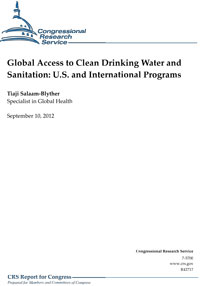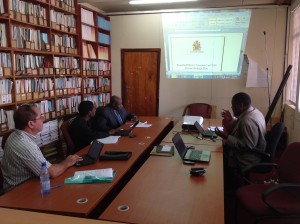Water Res. 2012 Aug 30.
Solar disinfection of wastewater to reduce contamination of lettuce crops by Escherichia coli in reclaimed water irrigation.
Bichai F, Polo-López MI, Fernández Ibañez P. Plataforma Solar de Almería-CIEMAT, Carretera Senés km 4, 04200 Tabernas (Almería), Spain. Electronic address: fbichai@seas.harvard.edu.
Low-cost disinfection methods to allow safe use of recycled wastewater for irrigation can have important beneficial implications in the developing world. This study aims to assess the efficiency of solar disinfection to reduce microbial contamination of lettuce crops when solar-treated wastewater effluents are used for irrigation. The irrigation study was designed as a complete experimental loop, including (i) the production of irrigation water through solar disinfection of real municipal wastewater treatment plant effluents (WWTPE), (ii) the watering of cultivated lettuce crops at the end of solar treatment, and (iii) the detection of microbial contamination on the irrigated crops 24 h after irrigation.
Solar disinfection was performed using two types of reactors: (i) 20-L batch borosilicate glass reactors equipped with CPC to optimize solar irradiation, and (ii) 1.5-L PET bottles, i.e. the traditional SODIS recipients commonly used for disinfection of drinking water in developing communities. Both solar and H(2)O(2)-aided solar disinfection processes were tested during ≤5 h exposure of WWTPE, and Escherichiacoli inactivation was analysed. A presence/absence detection method was developed to analyse lettuce leaves sampled 24 h after watering for the detection of E. coli.
Results of inactivation assays show that solar disinfection processes can bring down bacterial concentrations of >10(3)-10(4)E. coli CFU mL(-1) in real WWTPE to <2 CFU/mL (detection limit). The absence of E. coli on most lettuce samples after irrigation with solar-disinfected effluents (26 negative samples/28) confirmed an improved safety of irrigation practices due to solar treatment, while crops irrigated with raw WWTPE showed contamination.





